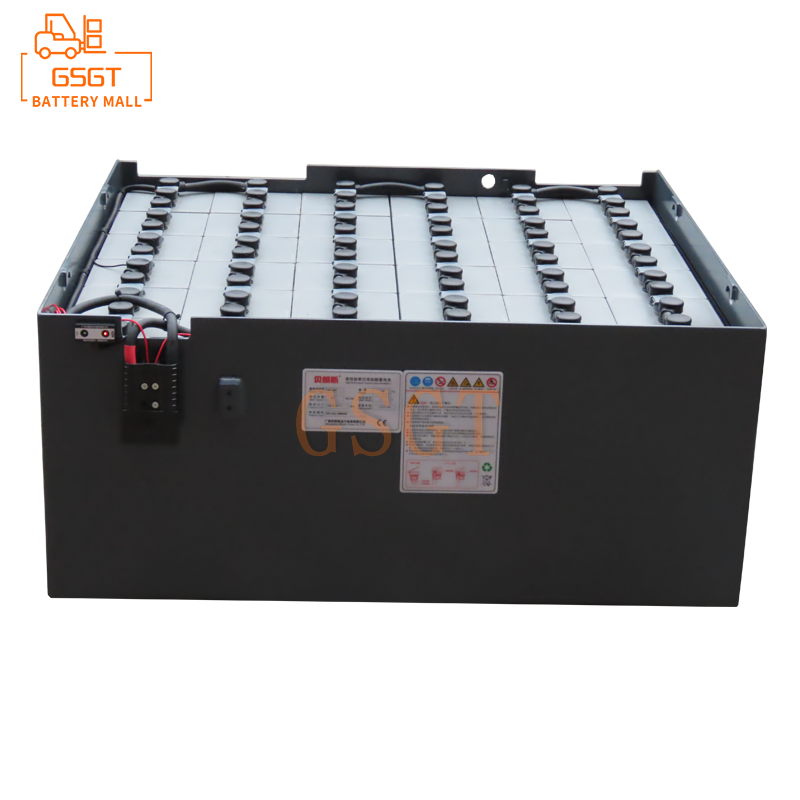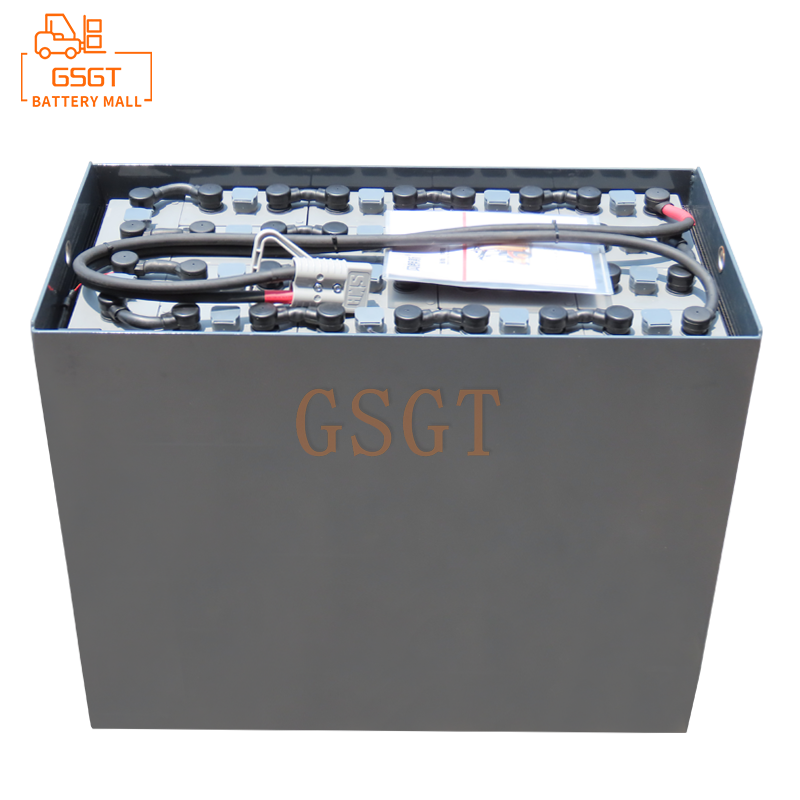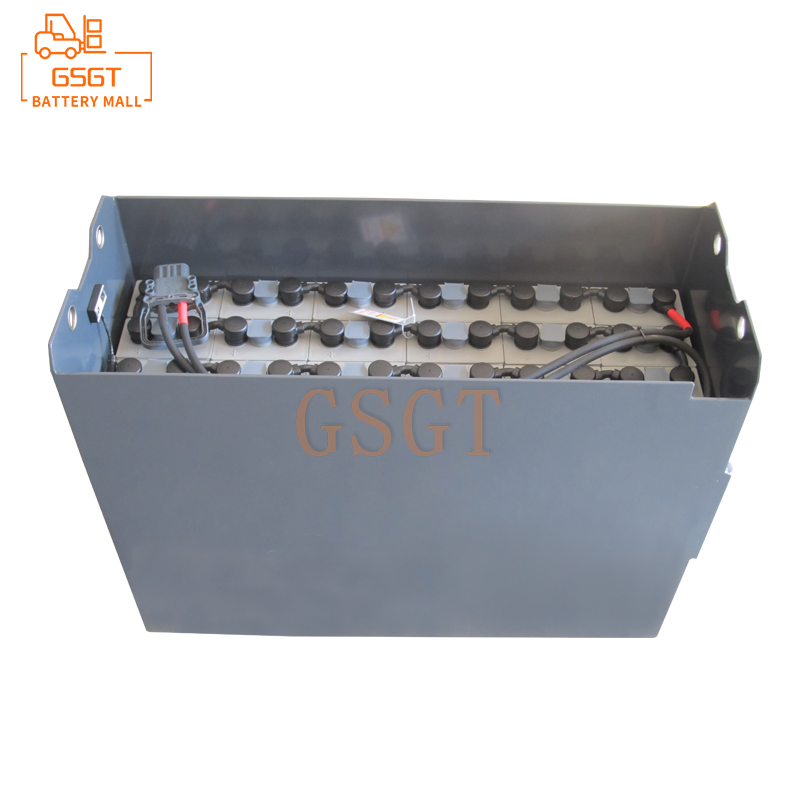Time:2025-04-09 10:31:21
Browse:594
In the field of industrial logistics, forklift is an important handling equipment, and lead-acid batteries, one of its power sources, play a key role. The performance of lead-acid battery directly affects the working efficiency and operating cost of forklift truck, so it is very important to master its maintenance technology. The following details the necessary tools, materials, and skills required for forklift lead-acid battery maintenance.
1. Essential tools
(1) Detection tools
1. ** Hydrometer ** : Hydrometer is a key tool for detecting the density of lead-acid battery electrolyte. By measuring the electrolyte density, the charging state and health status of the battery can be judged. For lead-acid batteries produced by different manufacturers, the standard density of electrolyte is usually between 1.26-1.28 g/cm³ (25 ° C) when fully charged. There are many types of hydrometer such as glass tube type and suction type. Glass tube type hydrometer needs to inhale the electrolyte into the tube to read the scale. Suction type hydrometer is more convenient to operate, and can be directly inserted into the electrolyte to measure and display the density value.
2. ** Multimeter ** : A multimeter is used to measure battery voltage and current. During maintenance, the battery power can be preliminarily determined by measuring the open circuit voltage of the battery. When checking whether there is a short circuit fault inside the battery, the low resistance measurement gear of the multimeter can be used to measure the resistance between the positive and negative poles of the battery. Under normal circumstances, the resistance should be close to infinity. If the resistance value is low, it indicates that there may be a short circuit inside the battery. Digital multimeter has the advantages of intuitive reading and high precision, which is the first choice in maintenance work.
3. ** Internal resistance tester ** : Internal resistance is an important indicator to reflect the health status of lead-acid batteries. As the battery life increases and ages, the internal resistance will gradually increase. The internal resistance tester can quickly and accurately measure the internal resistance of the battery. The professional internal resistance tester can measure the lead acid battery of different specifications, and evaluate the remaining life and performance of the battery by comparing with the standard internal resistance data. For example, for a 48-V lead-acid battery set commonly used in forklifts, the internal resistance tester can be used to detect the internal resistance of each cell battery. If the internal resistance of a single cell battery exceeds a certain threshold (such as 0.5mΩ), the battery may need to be repaired or replaced.
(2) Maintenance operation tools
1. ** Wrench ** : including various specifications of open wrenches, box wrenches and socket wrenches. A wrench is necessary for removing and installing battery connection terminals and fastening bolts on battery containers. Due to the large specifications of the bolts of the connection terminals of the forklift lead-acid battery, wrenches of different sizes such as 10-19mm are generally required. When using the wrench, it is necessary to choose the appropriate specification to avoid the bolt slip or damage due to the inconsistent specification.
2. ** Screwdriver ** : Used to remove the screws on the battery box and open the cover of the battery injection hole. Flat-head and Phillips screwdrivers can be used according to the screw type. During operation, ensure that the head of the screwdriver is tightly attached to the screw slot to prevent the screwdriver from slipping and damaging the screws and surrounding components.
3. ** Straw and funnel ** : When the electrolyte or distilled water is supplemented, the straw is used to absorb the electrolyte, and the funnel is used to slowly add the electrolyte or distilled water to the battery injection hole. The pipe diameter of the straw should be moderate, easy to absorb and transfer the electrolyte, and the neck of the funnel should be slender, which can accurately align the injection hole to prevent the electrolyte from overflowing.
4. ** Special battery repair instrument ** : Some advanced battery repair instruments have the functions of devulcanization and activation plate. In the process of long-term use of lead-acid battery, the surface of the plate is easy to produce sulfide, which affects the performance of the battery. By output specific frequency and waveform pulse current, the battery repair device decomposes the sulfide on the plate and restores the battery capacity. For example, some smart battery repair machines can automatically adjust the repair program according to the battery parameters to improve the repair effect.
2. Necessary materials
(1) Electrolyte and distilled water
1. ** Electrolyte ** : The electrolyte used by the lead acid battery of the forklift truck is prepared by sulfuric acid and distilled water in a certain proportion. During battery maintenance, when the electrolyte density is too low or the electrolyte is insufficient due to battery leakage, you need to add the appropriate density of electrolyte. The sulfuric acid concentration of the electrolyte is generally between 30%-40%, and the specific concentration needs to be determined according to the requirements of the battery manufacturer and the actual use. When supplementing the electrolyte, attention should be paid to the preparation of high-purity sulfuric acid and distilled water to avoid mixing impurities to affect the battery performance.
2. ** Distilled water ** : In the daily maintenance of the battery, with the battery charging and discharging process, the water will gradually evaporate, resulting in a decrease in the electrolyte level. At this time, distilled water needs to be added to replenish water and keep the electrolyte level within the normal range. The purity of distilled water is higher, should meet the relevant standards, avoid the use of ordinary water containing impurities, to prevent impurities in the battery chemical reaction, damage to the battery plate.
(2) Battery plate and separator
1. ** Battery plate ** : the plate of the lead-acid battery is divided into positive plate and negative plate, the active substance on the positive plate is mainly lead dioxide, the active substance on the negative plate is spongiform lead. When the battery plate appears serious vulcanization, corrosion or fracture, the plate needs to be replaced. When replacing the plate, it is necessary to select the plate that matches the specification and model of the galvanic battery to ensure that the size, capacity and other parameters of the plate are consistent. Before installation, the new plate should be cleaned and activated to improve the performance and service life of the plate.
2. ** Partition plate ** : The partition plate is located between the positive and negative plates, which plays the role of isolating the positive and negative plates and preventing short circuit. Diaphragm materials are generally microporous rubber, plastic and so on. During the maintenance process, if the partition is found to be damaged, deformed or lose the isolation function, it should be replaced in time. High-quality partitions should have good insulation properties, high porosity and chemical stability, can effectively prevent the conduction of electrons between positive and negative plates, while allowing ions in the electrolyte to pass smoothly.
(3) Connect cables and insulation materials
1. ** Connecting cables ** : A forklift lead-acid battery pack consists of multiple single-cell batteries in series, and the batteries are connected by connecting cables. The connection cable needs to have good electrical conductivity and sufficient current carrying capacity to ensure the stable transmission of current. The material of the cable is generally copper, and the cable diameter is selected according to the current size of the battery pack. For example, for a 48V, 200Ah battery pack, the cable diameter may be 16-25 mm². When replacing a cable, ensure that the cable is properly connected to avoid heat and voltage drop caused by poor contact.
2. ** Insulation material ** : In the battery maintenance process, the insulation material is used to insulate the battery connection parts and exposed metal parts to prevent short circuit and electric shock accidents. Commonly used insulation materials are insulation tape, heat shrink pipe and so on. The insulation tape should have good insulation performance, viscosity and aging resistance, and be tight and uniform when wrapping the connection part to ensure the insulation effect. After heating, the heat shrink pipe will shrink and tightly wrap cables or components to form a good insulation layer. The diameter of the heat shrink pipe must be selected according to the size of the object to be wrapped.
3.Skill points
(1) Safe operation skills
1. ** Protective measures ** : When repairing the forklift lead-acid battery, you must wear personal protective equipment, including acid-resistant gloves, goggles, protective clothing, etc. The electrolyte in a lead-acid battery is highly corrosive, which can cause serious injury if accidentally splashed on the skin or eyes. During the operation, to avoid direct contact between the electrolyte and the body, such as electrolyte sputtering, should immediately rinse with a lot of water, and timely medical treatment.
2. ** Electrical safety ** : The lead-acid battery will produce flammable and explosive gases such as hydrogen during the charging and discharging process, so the maintenance work should be carried out in a well-ventilated place, away from the fire source and open flame. Before testing and servicing the battery, disconnect the battery from the electrical system of the forklift truck to prevent electric shock. When using electrical testing tools, ensure that the tools are well grounded to avoid safety problems caused by leakage.
3. ** Battery handling safety ** : forklift lead-acid batteries are heavier, and appropriate handling tools should be used during the handling process, such as forklifts, cranes, etc., and ensure that the carrying capacity of the handling tools is sufficient. At the same time, pay attention to the placement and fixing of the battery to prevent the battery from slipping during the handling process, causing casualties and equipment damage.
(2) Fault diagnosis skills
1. ** Appearance Check ** : By observing the battery appearance, you can find some obvious signs of failure. Check whether the battery box is cracked, deformed, or leaking. If the battery box leaks, the battery shell is damaged. Replace the battery or repair the box in time. Check whether battery connection terminals are corroded or loose. Corrosion of battery connection terminals increases the contact resistance, which affects battery performance. Clean the corroded parts using sandpaper, and tighten the terminals again. Check whether the battery injection hole cover is missing or damaged. If the battery injection hole cover is damaged, the electrolyte volatilization will be accelerated, which will affect the battery service life.
2. ** Parameter detection and analysis ** : Use the hydrometer, multimeter, internal resistance tester and other tools to detect the battery parameters, and analyze the battery fault according to the detection results. For example, when the battery voltage is lower than the normal range and the electrolyte density is also low, the battery may be undercharged or there is an internal short circuit fault. By measuring the internal resistance of the battery, if the internal resistance is significantly increased, it indicates that the battery plate may be vulcanized or aging, and needs to be repaired or replaced. When analyzing the battery parameters, it is necessary to comprehensively judge the use time of the battery, the number of charging and discharging times and other factors to accurately find out the cause of the fault.
3. ** Charge and discharge test ** : For some battery faults that are difficult to be judged by conventional detection, charge and discharge tests can be carried out. In a safe environment, use a special charger to charge the battery and observe the changes in voltage and current during the charging process. Under normal circumstances, the battery voltage rises rapidly in the early stage of charging, and then gradually stabilizes, when the voltage reaches a certain value and the current gradually decreases to close to zero, it indicates that the battery is basically full. During the discharge test, the load resistance can be used to simulate the current load of the forklift truck, observe the voltage change during the battery discharge, and calculate the actual capacity of the battery. If the battery capacity is significantly lower than the nominal capacity, it indicates that the battery performance has declined, and further inspection and maintenance are required.
(3) Maintenance operation skills
1. ** Electrolyte supplement and adjustment ** : When the battery electrolyte level is too low, distilled water should be added first to make the liquid level reach the specified height. Then use a hydrometer to measure the electrolyte density, if the density is lower than the standard value, you can slowly add a higher density electrolyte to adjust. In the process of adding the electrolyte, it is necessary to stir continuously to mix the electrolyte evenly, and pay close attention to the density change of the electrolyte until it reaches the standard density range. After adjusting the electrolyte density, the battery should be left standing for a period of time, so that the electrolyte can fully penetrate into the inside of the plate, and then subsequent testing or use.
2. ** Plate replacement and repair ** : When replacing the battery plate, first of all, the electrolyte in the battery must be extracted, and then carefully remove the battery box and remove the damaged plate. When installing the new plate, ensure that the plate installation position is correct, the positive and negative plates are alternately arranged, and the partition board is firmly installed to avoid short circuit contact between the plates. For batteries with light plate vulcanization, a chemical repair method can be used to inject a repair solution containing specific additives into the battery to decompose the sulfide on the plate through a chemical reaction. For the plate with severe vulcanization, it is necessary to use a special battery repair instrument for pulse repair, and the repair parameters should be adjusted according to the battery situation during the repair process to ensure the repair effect.
3. ** Connection part repair and insulation treatment ** : For battery connection terminal corrosion problems, you can first sand the corrosion layer clean, exposing the metallic luster, and then apply a thin layer of petroleum jelly or special conductive paste to prevent corrosion again. When reconnecting the cable, ensure that the connection is secure, tighten the bolts, and use a torque wrench to tighten the cable according to the specified torque. When insulating the battery connection parts and exposed metal parts, follow the specifications and tightly wrap them with insulation tapes or heat shrink tubes to ensure good insulation performance and prevent short circuit and leakage accidents.
Maintenance of forklift lead-acid batteries requires complete tools, appropriate materials, and solid skills in safety operation, fault diagnosis, and maintenance. Through scientific maintenance methods, it can effectively extend the service life of lead-acid batteries, reduce the operating costs of forklifts, and ensure the efficient and stable operation of industrial logistics operations.

$1105

$4045

$2140

$2040

MESSAGE
Professional And Efficient
Security
Affordable Price
Professional Services